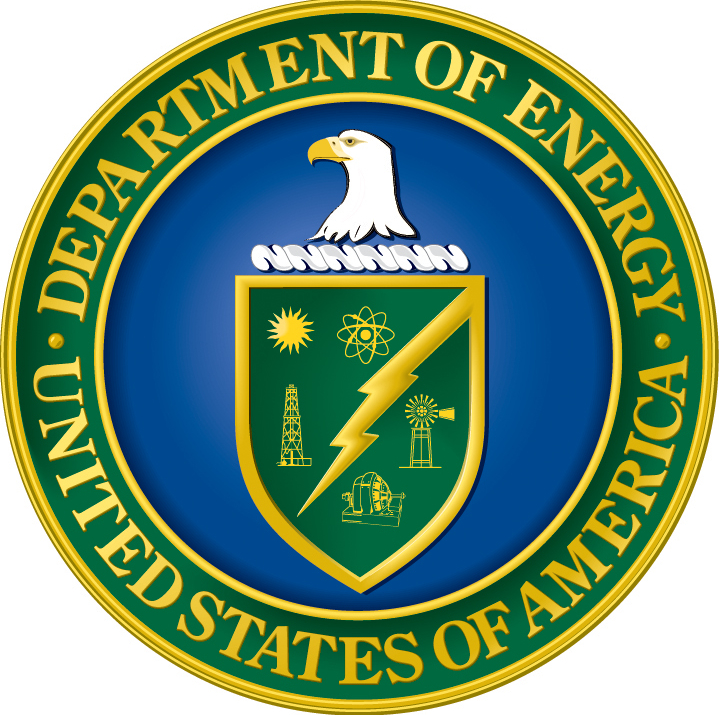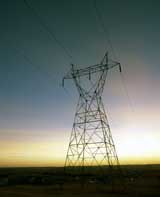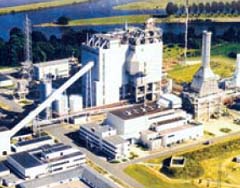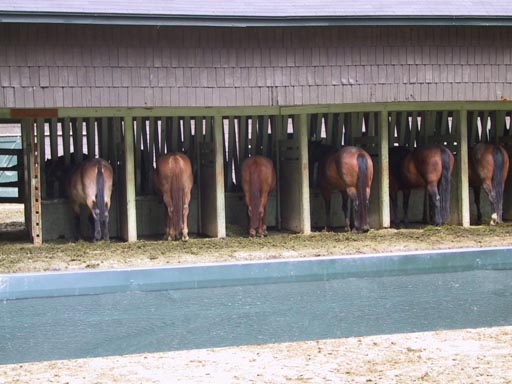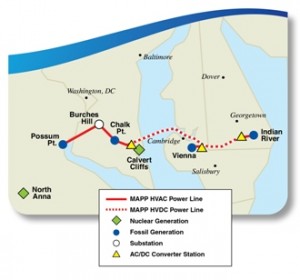“Invitation to Consult” on Great Northern Transmission
January 20th, 2015
Interesting letter arrived today:
It says that “DOE is contacting you because you submitted comment(s) related to cultural resources during the open NEPA public scoping period for the proposed GNTL project.”
???
So what does that mean? What’s involved? Sending info to them? Sending more Comments? Attending meetings? A free trip to D.C? A self-funded trip to International Falls in February?
“Consultation” is a term of art in federal permitting, and is required with all Indian tribes, of which there are several in the area of the project. In this case, they also specify “the State Historic Preservation Officer” and “the Advisory Council on Historic Preservation,” and also “certain individuals and organizations…”
Here’s the National Historic Preservation Act of 1966 (NHPA)
Are “historical resources” all that they’re concerned about, is there a special category for “cultural resources?” Or are different people invited to consult on different categories?
And if this is something I want to do, and it is, I have to “include information about your demonstrated legal or economic relation to the undertaking” … (odd word, that)… ” or to properties potentially affected by the proposed GNTL project…”
 Guess I’d better figure out what I said in those comments first!
Guess I’d better figure out what I said in those comments first!
DOE’s Preliminary Findings 2012 Congestion Report
August 7th, 2012
The DOE is hosting webinars on its 2012 transmission congestion study:
The study isn’t released out, even a draft, and the powerpoint isn’t available yet online. GRRRRRRRR, we need that to have an idea what’s going on… oh, that’s probably why it isn’t there. Soon, I’ll post it when it appears.
The first webinar was today, just over, and there are two more — just click on linked date to register:
- Thursday, August 16, 2012 2-3:30 pm ET (industry and others)
- Tuesday, August 21, 2012 2-3:30 pm ET (state focus)
What I’m seeing here from the powerpoint is that congestion is a non-issue. And what is very clear from the congestion maps for 2009-2011 is that in 2009 there was essentially NO congestion, and it got worse in 2010, and then not so bad in 2011 but still far more than in 2009. In essence, apparently what they’re doing has made it worse.
They did ask my question, based on the above observation of the 2009, 2010 and 2011 maps, and asked what the explanation was for absence of congestion in 2009:
A: He said that the relatively low level of economic activity was certainly a factor. Temperatures were more severe in 2010 so that was a factor. Yes, congestion, in terms of these three graphics, congestion is worse in 2010 than in the other two years, that is generally in the context of a generally declining pattern over a couple of years we’ve been looking at. Don’t want anyone to get the impression that …. So part of this is that this is a function of scaling also? Yes…
Uh-huh… right…
And then from slide 22, Preliminary Regional Findings: Midwest:
- Data indicate on significant, persistent constraints, apart from those related to the development of remote renewable resources
- Data do not indicate any areas with major reliability problems
- The economic congestion that is occurring is small in relation to the total cost of wholesale electricity traded in organized spot markets.
- Inconsistent market designs and practices between RTOS — as distinct from lack of transmission capacity — are a significant impediment to economically beneficial electricity trade.
But hey, we knew that!
Here are the prior “studies” from DOE:
And remember, the purpose of this is, in THEIR words, from THEIR site:
DOE’s Congestion Studies may contribute information needed to support the future designation of one or more National Interest Electric Transmission Corridors (National Corridors). On the basis of a congestion study, and after reviewing and considering public comments, the Secretary of Energy is authorized but not required to designate related geographic areas as National Corridors. Designation of a National Corridor has two effects: 1) it emphasizes that the Department considers the particular congestion problem to which the corridor pertains to be sufficiently acute to merit federal concern; and 2) it enables the Federal Energy Regulatory Commission to exercise “backstop” authority (under conditions specified in the Federal Power Act) to approve the siting of transmission facilities within the area of the corridor. In particular, the Commission may exercise its jurisdiction if a state agency has “withheld approval” for more than one year of an application to site a transmission facility within the corridor.
But wait, even they admitted in today’s Webinar that the courts have invalidated the designation of National Interest Electric Transmission Corridors both generally and specifically:
So we’re doing this … why???
It’s all about market, it has nothing to do with electric reliability, and billions are being spent to address a problem that does not exist and which is illegal to implement. WRONG? Prove it, please…
Mesaba Project at the PUC on August 14th
August 5th, 2012
Excelsior Energy’s Mesaba Project, the coal gasification plant that will not die, is returning to the Minnesota Public Utilities Commission on August 14, 2012.
At that time, they’ll address whether the original project’s permits apply to this project, and whether this one, under Minn. Stat. 216B. 1694, requires additional environmental review:
**6. E6472/GS-06-668 Excelsior Energy, Inc.
In the Matter of the Joint LEPGP Site Permit, HVTL Route Permit and Pipeline (Partial
Exemption) Route Permit Application for the Mesaba Energy Project in Itasca County.
Should the Commission find, pursuant to Minnesota Statutes 216B. 1694 subdivision 3, that the
site and route permits issued on March 12, 2010 for the Mesaba Energy Project are deemed valid
for a natural gas fired plant located at the same site and that no additional environmental review
is required under applicable state rules?
This docket has been one of the longest strangest trips ever, a coal gasification plant that wasn’t needed yet fed by state and federal money, using CO2 capture and storage that does not, can not, and will not exist. Here’s some history:
Health Benefits of Coal (ya gotta read this one, HILARIOUS!)
Mesaba – Extend the Hearing! (the hearing was a farce)
And why are we here on the 14th? The PUC granted a Site Permit to the project f/k/a Mesaba Project, the coal gasification plant:
Then it starts getting complicated, Excelsior sends PUC letter saying it wants confirmation that the permits issued for the Mesaba Project coal gasification plant are valid for a natural gas plant, and that it would require no further environmental review:
And then Excelsior chimes again disclosing not much of anything about their “plan” for this gas plant:
And then the Comment period is extended and we get another bite:
And now we’re off to the races…
In the Duluth News Tribune:
Obama “fast tracks” transmission?!?!?!
October 5th, 2011
Changes that make me ill…
Progress? NOT! My screen just lit up from East Coast and Midwest birdies that there was a White House conference call going on, and here are some reports, the short version is that Obama is toadying for the transmission owners to ram this down our throat. Supposedly they’d conferred with “stakeholders” and funny, I never heard a peep… but this creeping federal authority is based on exactly what? What are they proposing?
They list a handful of projects, two of which I’m mired in, the CapX 2020 Hampton-LaCrosse line in Minnesota and Wisconsin, and the Susquehanna-Roseland line in New Jersey.
Here’s the map of the transmission projects they’re hyping, and look at the depiction of CapX 2020 Hampton-LaCrosse, it’s not even a route option that’s under consideration as presented in the Minnesota or Wisconsin Applications!
Here are some fascinating links — THERE’S NOTHING HERE, BLANKS:
COORDINATION OF FEDERAL AUTHORIZATIONS FOR ELECTRIC TRANSMISSION FACILITIES
Here’s where they list what’s going on for the various projects they targeted:
eTRANS FEDERAL PERMITTING TRANSMISSION TRACKING SYSTEM MAIN PAGE
And here’s the scary part, look at this language on that main page:
Leveraging this interagency collaboration and expanding the scope of activity beyond Federal lands, the Administration recently formed the Rapid Response Team for Transmission (RRTT), comprised of these same nine agencies.
So do explain, where do they get the authority for “expanding the scope of activity beyond Federal lands?”
Check these “pages” for individual projects – there’s not much there:
eTRANS FEDERAL PERMITTING TRANSMISSION TRACKING SYSTEM – SUSQUEHANNA-ROSELAND
eTRANS FEDERAL PERMITTING TRANSMISSION TRACKING SYSTEM – CAPX 2020
And check this:
There are phone numbers on the press release, but no one knows anything and I’m getting transferred around. So then I call the White House, then got forwarded to Neil Kemkar, White House Council of Environmental Quality… we shall see…
PSEG is already excited about it, PPL put out a press release too, nothing from Xcel yet that I can find:
October 5, 2011
Susquehanna-Roseland Reliability Project Named To Federal Rapid Response Team
My two basic questions:
1) What does “pilot demonstrations of streamlined federal permitting” mean? What is the authority for “pilot demonstrations of streamlined federal permitting?”
2) What is the authority for “expanding the scope of activity beyond Federal lands?”
And here’s the poop, directly from the DOE’s Lauren Azar (Senior Advisor, Office of the Secretary of Energy).
She just called, and she’s a point person on the Rapid Response Team. I haven’t seen her since she was representing American Transmission Company as it was born in the Arrowhead-Weston Transmission Project hearing in Wisconsin, was that really 10 years ago??? Anyway, I stated my concerns, she was direct and frank. My fears are still there, that this is a way to ram projects through. If not, why would they do this? These are rough notes, not quite quotes:
This is a way in which feds will work better together. Each agency will be applying their statutes.
In the past, there wasn’t a lot of coordination between the agencies, federal agencies, and the state agencies too, they can participate if they want.We’re working to figure out a way to do it, whether to do the state and federal pieces sequentially or concurrently. Where agencies doing same analysis, they can work together. We’re trying to make things work more smoothy.
We’ve talked to state Commissions in MN and WI, on Hampton and LaCrosse about working together
This is the way to undermine moving stuff to the feds
If we can do this, then the statesThere are cases where there’s delay, and cases where transmission has been turned down by the state
I’m not advocating that any authority get transferredPresidential mem0 end of August, Aug 28, was the basis for this
We’re not doing anything differently, we’re just trying to do it betterAs far as independent authority, we don’t need it, this is just doing what we can do and doing it better
She persisted with the fiction that projects are not getting permitted. Sure, there’s the PATH transmission line, but that was demonstrated not to be needed (YEAAA Piedmont Environmental Council). What others? She said there were lots of them, but no specifics. When she said that this transmission is about “clean energy,” I countered thatthat this transmission is NOT for wind, and she said we’ll have to discuss that over a beer some time. I don’t think there’s enough beer in Wisconsin to facilitate that discussion!
I greatly appreciated her call, it helped clarify the DOE’s position and intent.
Here’s the White House press release, in toto, and as you read it, underline usage of the word “streamline” and be very concerned (Toto, we ain’t in Kansas anymore):
Obama Administration Announces Job-Creating Grid Modernization Pilot Projects
Seven Transmission Projects Across 12 States Will Increase Grid Reliability and Integrate Renewable Energies
10/05/2011
Contact: Sahar Wali (CEQ) (202) 395-5428
Adam Fetcher (DOI) (202) 208-6416
Justin DeJong (USDA) (202) 720-4623
Tiffany Edwards (DOE) (202) 586-4940WASHINGTON – Demonstrating its commitment to job creation and modernizing America’s infrastructure, the Obama Administration today announced it would accelerate the permitting and construction of seven proposed electric transmission lines. This move will speed the creation of thousands of construction and operations jobs while transforming the nation’s electric system into a modern, 21st century grid that is safer and more secure, and gives consumers more energy choices.
“The President wants to get America working again. He is committed to cutting red tape and making immediate investments to put people to work modernizing our roads, bridges, airports, and energy systems,” said Nancy Sutley, Chair of the Council on Environmental Quality. “Building a smarter electric grid will create thousands of American jobs and accelerate the growth of domestic clean energy industries translating into more energy choices and cost savings for American consumers, and a more secure energy future for our country.”
These projects will serve as pilot demonstrations of streamlined federal permitting and increased cooperation at the federal, state, and tribal levels. Project developers expect that the streamlined projects will increase grid capacity and create thousands of jobs in Arizona, Colorado, Idaho, Minnesota, New Mexico, Nevada, Wyoming, Utah, New Jersey, Pennsylvania, Oregon, and Wisconsin.
“These are the kinds of job-creating projects that the President wants to see across the country,” Sutley said. “The American Jobs Act would make immediate investments in infrastructure, putting hundreds of thousands of workers back on the job across the country. These investments would not only put people to work now, but also yield lasting benefits for the economy, increasing growth in the long run.”
Building electric transmission lines involves coordination among multiple federal, state, and tribal agencies subject to permitting, review, and consultation. Improving the overall quality and timeliness of these procedures enables the federal government to help expedite new transmission lines. Adding necessary transmission infrastructure will integrate renewable electricity sources into the grid, accommodate the growing number of electric vehicles on America’s roads, help avoid blackouts, restore power more quickly when outages occur, and reduce the need for new power plants.
“Transmission is a vital component of our nation’s energy portfolio, and these seven lines, when completed, will serve as important links across our country to increase our power grid’s capacity and reliability,” said Secretary of the Interior Ken Salazar. “This is the kind of critical infrastructure we should be working together to advance in order to create jobs and move our nation toward energy independence.”
“To compete in the global economy, we need a modern electricity grid,” said Energy Secretary Steven Chu. “An upgraded electricity grid will give consumers choices while promoting energy savings, increasing energy efficiency, and fostering the growth of renewable energy resources.”
“USDA’s collaboration with other agencies to build electric transmission will help to meet our country’s electric needs in the 21st century,” Vilsack said. “These infrastructure projects will also create jobs and opportunities that will strengthen our economy to benefit households and businesses throughout the country.”
“These projects will put Americans to work building the electricity grid of the future – one that allows for more electric vehicles on the road and homes and businesses powered by renewable energy,” EPA Administrator Lisa Jackson said. “This is yet another step forward in our efforts to build a 21st century energy sector in America that is cleaner, healthier and more sustainable.”
“A modern, 21st century transmission grid that expands transmission capacity in an efficient, cost-effective manner is critical to ensuring that Americans will have reliable, reasonably priced electricity,” FERC Chairman Jon Wellinghoff said.
“It’s important that these pilot projects move forward quickly while getting the economic, cultural and sustainability benefits provided by historic preservation reviews,” said Milford Wayne Donaldson, FAIA, chairman, Advisory Council on Historic Preservation. “The pilot project approach provides an efficient means to meet our respective agencies’ legislated responsibilities. They benefit the American people while creating a model to streamline future efforts. This is good government at work.”
In October of 2009, nine Federal entities including, the White House Council on Environmental Quality (CEQ), the Department of the Interior (DOI), the Department of Agriculture (USDA), the Department of Energy (DOE), the Department of Commerce, the Department of Defense, the Environmental Protection Agency, the Federal Electric Regulatory Commission (FERC), and the Advisory Council on Historic Preservation, signed a Memorandum of Understanding increasing their coordination to expedite and simplify building of transmission lines on Federal lands.
Leveraging this interagency collaboration and expanding the scope of activity beyond Federal lands, the Administration’s recently formed Rapid Response Team for Transmission (RRTT), comprised of these same nine agencies, will accelerate responsible and informed deployment of these seven key transmission facilities by:
Coordinating statutory permitting, review, and consultation schedules and processes among involved federal and state agencies as appropriate through Integrated Federal Planning,
Applying a uniform and consistent approach to consultations with Tribal governments, and,
Expeditiously resolving interagency conflicts and ensuring that all involved agencies are fully engaged and meeting schedules.
Crossing twelve states the RRTT’s seven selected pilot project transmission lines are as follows:
* Boardman-Hemingway Line powering Oregon and Idaho:
The new 500 kilovolt (kV) transmission line proposed by Idaho Power would create an approximately 300 mile long, single-circuit electric transmission line from a proposed substation near Boardman, Oregon to the Hemingway Substation near Melba, Idaho—known as the Boardman to Hemingway Transmission Line Project or B2H Project. According to the developer of this project during peak construction, this project is estimated to create about 500 jobs in Idaho and Oregon.* Gateway West Project to bring new transmission across Wyoming and Idaho:
Jointly proposed by Idaho Power and Rocky Mountain Power, this project would add approximately 1,150 miles of new, high-voltage transmission lines between the Windstar Substation near Glenrock, Wyoming and the Hemingway Substation near Melba, Idaho. According to the developer of this project, during peak construction, it is estimated to create between 1,100 and 1,200 jobs.* Hampton-Rochester-La Crosse Line to power to Minnesota and Wisconsin:
This double- circuit capable 345 kV transmission line will run between a new substation near Hampton, Minnesota, a new substation north of Pine Island, Minnesota, and continue on to cross the Mississippi River near Alma, Wisconsin. A single circuit 345 kV line will be built in Wisconsin to a new substation in the La Crosse area. Two 161 kV lines will be built between the new substation near Pine Island and existing substations northwest and east of Rochester. According to the developer of this project, approximately 1,650 jobs will be created during peak construction.* Oregon to get additional transmission from Cascade Crossing Line:
Portland General Electric’s proposed Cascade Crossing Transmission Project includes approximately 210 miles of 500 kV transmission line from Boardman to Salem, Oregon—for the construction of four new substations, expansion of three existing substations, and upgrades to the existing transmission systems near Salem. According to the developer, Cascade Crossing is expected to create about 450 jobs during peak construction.* SunZia Transmission, LLC to bring power to New Mexico and Arizona:
SunZia Transmission, LLC plans to construct and operate up to two 500 kV transmission lines originating at a new substation in Lincoln County in the vicinity of Ancho, New Mexico, and terminating at the Pinal Central Substation in Pinal County near Coolidge, Arizona. According to the developer estimated job creation will be about 3,408 direct jobs during the construction period.* Susquehanna to Roseland Line brings new transmission to Pennsylvania and New Jersey:
PPL Electric Utilities (PPL) and Public Service Electric and Gas Company (PSE&G) have proposed the Susquehanna-Roseland power line project which includes an approximately 145-mile long 500 kV transmission line from the Susquehanna Substation in Pennsylvania to the Roseland Substation in New Jersey, and several 500 – 230 kV substations in both Pennsylvania and New Jersey. Based on the current schedule for the environmental review, the project is expected to be in service in the spring of 2015. According to the project’s developer, over 2000 jobs will be created in New Jersey and Pennsylvania.* Transwest Express to stand-up transmission from Wyoming to Utah and Nevada:
TransWest Express LLC plans to construct and operate a more than 700 mile, 600 kV, transmission line which is estimated by the developer to create 1,035-1,550 direct jobs per year at peak construction. This project will facilitate the development of new wind projects in Wyoming.For a map of the transmission line pilot projects please visit: www.doe-etrans.us
For more information on the Rapid Response Team for Transmission please visit: http://www.whitehouse.gov/administration/eop/ceq/initiatives
For more information on the Memorandum of Understanding please visit: http://www.whitehouse.gov/administration/eop/ceq/Press_Releases/October_28_2009
###
MAPP line goes for FEDERAL LOAN GUARANTEES
March 7th, 2011
Remember the Mid-Atlantic Power Pathway?
A while back, PEPCO or PHI, announced that they would not be moving forward with this project.
Lower energy production puts brakes on powerlines – News Journal January 24, 2010
Now they’re going for DOE federally guaranteed loans… funny how that works. A project that is delayed and delayed because it is NOT needed, that they are NOT willing to finance on their own, that they can’t or won’t get market financing for it, that they can’t or won’t finance themselves, and so now they want federal financing? Sounds like the DOE needs some lessons from Fannie Mae about financing outrageous and unsupportable projects!
Thinking about this, and what that pro forma must look like, I called the DOE rep about getting a copy of the loan application. Seems it’s not online and it’s not public and I’m going to have to do a FOIA request to get it, and that it will be redacted. OK, whatever… will keep you all posted about that!
Here are the official notices of the financing arrangement and the scoping meetings:
And Pepco’s MAPP site has the announcement on their “Events” page:
The public hearings are as follows:
Date: Tuesday, March 22, 2011
Presentation of Project Description & Oral Comments: 7:00 pm
Place: Holiday Inn Express – Prince Frederick
355 Merrimac Court
Prince Frederick, MD 20678Date: Wednesday, March 23, 2011
Presentation of Project Description & Oral Comments: 7:00 pm
Place: Cambridge-South Dorchester High School
2475 Maple Dam Road
Cambridge, MD 21613Date: Thursday, March 24, 2011
Presentation of Project Description & Oral Comments: 7:00 pm
Place: Indian River Senior Center
214 Irons Ave
Millsboro, DE 19966
Be there or be square!
